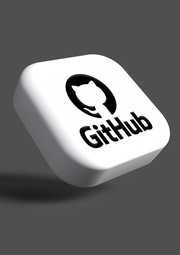Homeschooling and Coparenting | Teaching While Going Through Divorce
For homeschooling parents, the notion of being both your child’s caretaker and educator can be daunting at times, no matter how rewarding it is. That stress becomes even greater when you’re in the middle of a divorce. Divorce impacts everyone, and will affect your child in some ways, too.
However, you can’t let the stress and possible contention of your divorce cause a change or sudden “stop” in your homeschool curriculum.
By coming up with a plan to prioritize your child and their education over the stress of your divorce, you can stay positive, and end up actually looking forward to the experience as a distraction.
Let’s look at some tips you can use to effectively homeschool and co-parent while going through a divorce, so no matter what happens between you and your former spouse, your child’s education won’t suffer.
Staying Present With Your Little One
It can be a struggle to stay in the present moment when you’re going through a divorce. It’s one of the most stressful experiences an individual can go through.
However, it’s important not to let it distract you from your child’s education. If you find your mind wandering when you’re supposed to be teaching, consider trying different techniques to improve your emotional intelligence and process bigger emotions.
You can actually use these techniques with your child, as well. Don’t forget, no matter their age or how they seem to be acting about the divorce, that they’re experiencing a major change, too. Helping to boost their emotional intelligence is a life skill they can carry with them and utilize well into adulthood. Some of the best ways to stay in the present moment and improve your emotional intelligence include:
- Journaling
- Meditation
- Mindfulness
- Mind mapping
You’ve probably at least heard of most of those techniques, but not everyone is familiar with mind mapping. It’s the process of creating a free-flowing diagram of thoughts that branch out from a central concept. It’s a great way to organize your thoughts and keep them from feeling so overwhelming.
Parenting and Educating
One of the greatest challenges you’ll have to deal with during your divorce is getting used to the changes it will cause. Unfortunately, your child will be dealing with those changes, too, especially if you’ve established a custodial/visitation arrangement with your former spouse.
Because your child already is getting used to certain changes, it’s important that you and your spouse are on the same page when it comes to their education. That includes things like:
- Keeping a daily routine (for school and play)
- Adopting similar teaching styles
- Covering the same curriculum and moving forward
It’s also important to make sure you’re actively communicating with your ex. While that’s not always easy, finding ways to effectively communicate without letting past hurts get in the way is essential for your child’s well-being and educational growth.
Mom’s that have devoted themselves to homemaking and fulltime childcare may also find themselves with the need or desire for higher education. Don’t forget to work these goals into your co-parenting plans.
Keep the lines of communication as open as possible, and find what works for you. If you’re not comfortable with meeting face-to-face, consider texting, calling, or even using specific apps that are designed for co-parents, like OurFamilyWizard. Apps like these not only allow you to directly communicate with your ex, but they can help you keep track of schedules, making life just a little bit easier for your whole family.
Family Law Support
Throughout the process of dealing with the day-to-day turmoil that comes with any divorce, parents are often in need of support and guidance to navigate the complex landscape of family law. A family law attorney can provide relevant advice to ensure the best interests of the children are foremost, while working towards a fair outcome for coparents.
In addition to ensuring your child’s homeschooling schedule is uninterrupted, parents can be guided through the process to reduce stress for the entire family. From negotiating child custody arrangements to visitation schedules to child support, these professionals advocate to bring amicable resolutions with as little conflict as possible.
Valuable support resources may also be referred, such as therapists, counselors, and care groups to assist parents and children in coping with the emotional impact of the transition. This can empower parents to meet challenges with greater confidence and resilience so that their children may continue to thrive as students learning at home.
Giving Your Child What They Need
The best thing you can do for your homeschooled child as you go through a divorce is to give them exactly what they need to succeed. A large part of that includes maintaining a normal routine and keeping things as consistent as possible. However, because they’re dealing with so many changes, it might also include giving them a designated office space in your home for them to do their schoolwork.
Giving them a special space may not only help them stay productive and focus on their work, but it will provide an area where they can think and process their emotions.
This is especially important for teenagers who are trying to get through the more difficult years of school and prepare for college. Having a space of their own to get used to the changes and stay focused on their work can be extremely beneficial. It will also help them learn how to manage their stress and remain productive.
That doesn’t mean, however, that you should leave your child or teen on their own to figure things out. Now is the time to make sure they have what they need emotionally, as well as physically.
Even if it seems like your child is handling the divorce well, make sure you’re communicating with them regularly about their feelings. Take time out of the school day to talk about their emotions and how they’re feeling. Not only is it a positive way to show your love, but it’s teaching them a lesson that isn’t found in a book – emotional regulation and processing. That’s essential for them as they prepare for adulthood.
Going through a divorce is hard on the whole family, but it doesn’t have to disrupt your child’s homeschool routine. Keep these tips in mind to work with your ex, co-parent effectively, and ensure your child’s well-being and education are your top priorities.
About the Author
 Katie Brenneman is a passionate writer specializing in education, mental health, family lifestyle and online safety. When she isn’t writing, you can find her with her nose buried in a book or hiking with her dog, Charlie. You can follow her on Twitter.
Katie Brenneman is a passionate writer specializing in education, mental health, family lifestyle and online safety. When she isn’t writing, you can find her with her nose buried in a book or hiking with her dog, Charlie. You can follow her on Twitter.





 Ava Roman (she/her) is the Managing Editor of
Ava Roman (she/her) is the Managing Editor of


